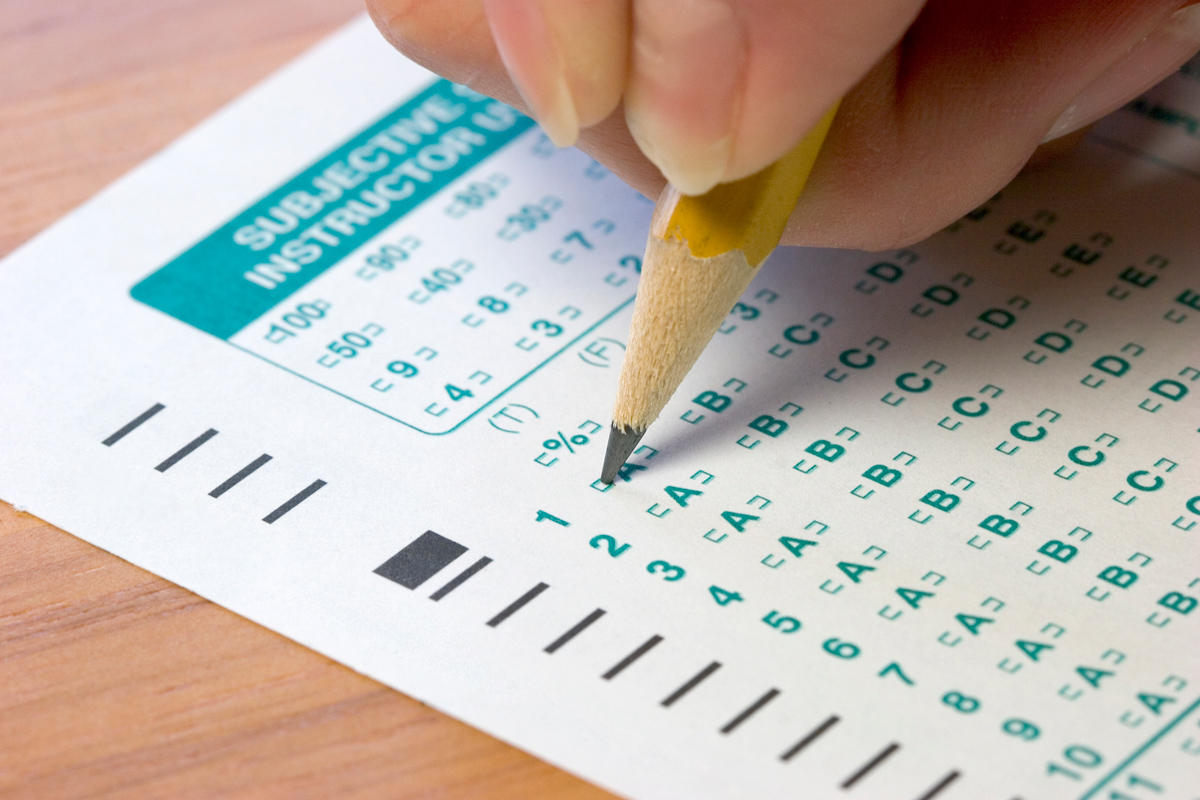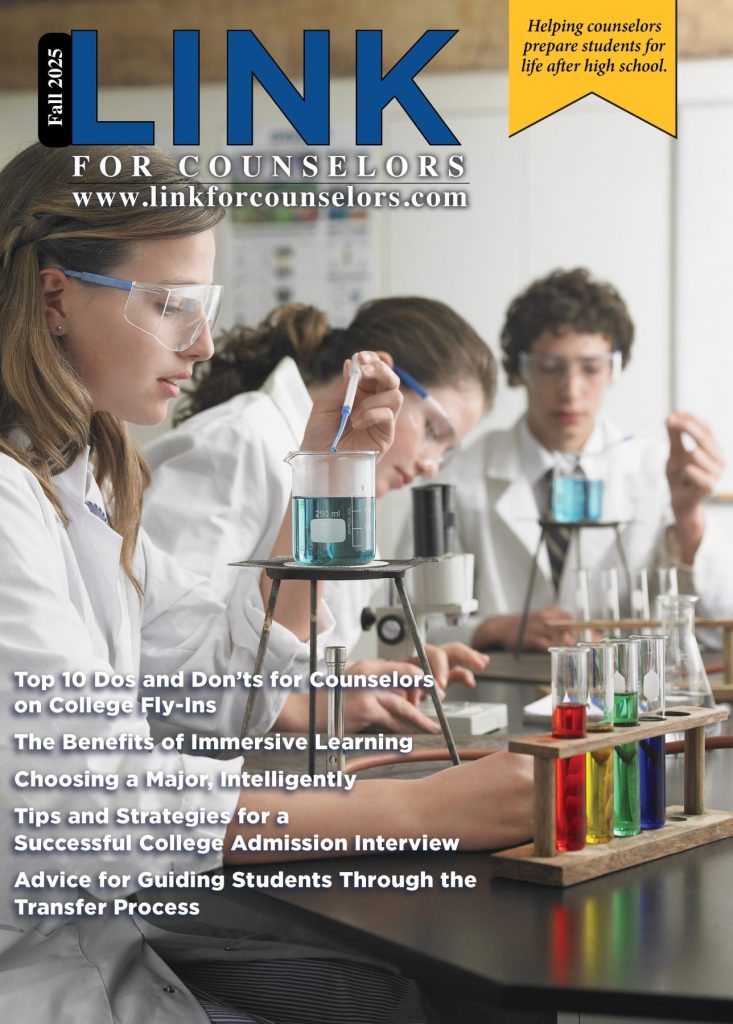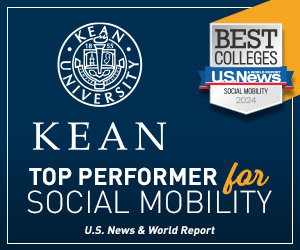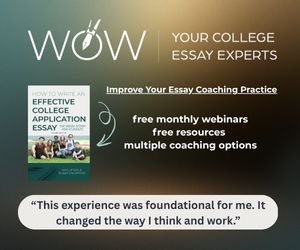Study Tips For Success was created by ValoreBooks, a textbook rental company

Colleges continue to struggle to fill classes
- Around 450 U.S. colleges still have spots to fill in their incoming class past the traditional May 1 admissions decision deadline, according to data compiled annually by the National Association of College Admission Counseling (NACAC). That marks a continued increase over previous years in the number of colleges listed by NACAC as of May 1.
- The full range of institutions — two- and four-year, private and public nonprofits — are in the mix, MarketWatch notes. In addition to seats, many are offering financial aid and housing and say they can accept transfers.
- Some institutions are on the list because they have rolling admissions while others are fending off demographic declines, according to MarketWatch.
Dive Insight:
NACAC’s list is primarily a tool for students still seeking a spot at a college, offering an unofficial lineup of the schools that have space. It also shows the scope of the growing struggle among some types of colleges to fill their classes by May 1.
Many say they need until June 1 or July 1 to do so, according to a survey out last fall from Inside Higher Ed. Of nearly 500 administrators surveyed, 38% said they had filled their classes by May 1. It was the third-straight year in which fewer than 40% of respondents said they had met that goal.
Not all colleges are struggling to fill spots, however. A recent surge in applications to public doctoral universities contributed to 54% of those administrators saying they made the May 1 deadline, Inside Higher Ed reported, compared to 27% of administrators at public master’s and bachelor’s institutions and 26% at community colleges who said the same. Historically, this has not been a strong priority for two-year institutions and colleges with rolling admissions, the publication noted.
That data also puts into perspective the hype over elite institutions’ ultra-low acceptance rates. In a recent review of 1,364 four-year colleges and universities, the Pew Research Center found that just “17 admitted fewer than 10% of applicants in 2017.” That group includes Stanford and Harvard universities. Meanwhile, more than half of the reviewed institutions admitted at least two-thirds of their applicants that year.
One factor making yield rates difficult for institutions to predict is that prospective students are applying to more colleges, according to Pew, though it cautions that the reason for the increase is not the use of the Common App, which makes it easier to apply to more schools.
Even with incoming classes filled, colleges still must ensure students show up on the first day of class. After all, around one-third of high school graduates who plan to head to college don’t end up enrolling, according to data cited by the U.S. Department of Education.
In response, institutions are using a variety of tactics to slow that summer melt, including “nudges” in the form of digital alerts that remind incoming students of critical deadlines and offer guidance around financial aid resources.
This summary was published by Education Dive. The author, Hallie Busta can be followed on Twitter with this link: Twitter

Tips to Help Your Students Land a Summer Internship
It’s not too late to find a summer internship, but it will take strategy and hard work.
A successful candidate uses every tool to find one of the many great internships that are there for the taking. Coincidentally, the skills and motivation that will help you land a great internship will be the same tools needed to land your first real job.
Here are five things you can do now to land an internship that can help you build real-world work experience.
Go digital
Believe it or not, just behind the seemingly impenetrable doors of the companies you’re trying to get into, lies chaos. Many companies have only recently started posting jobs. Some just listed them today.
Start hunting job sites like Indeed, ZipRecruiter and CareerBuilder. Leverage your LinkedIn profile, connections, and the site’s job search feature. If you don’t have a LinkedIn profile – create one now.
There are dozens of other career sites out there and you should try those too. Companies and career sites will want your resume, of course, so if you haven’t updated yours, now’s the time.
Get connected
Let’s start with your educational institution. Talk to your professors and career advisors.
Recruiters often hold career fairs at schools, so there’s an established relationship there. Personal recommendations count for a lot with most companies, so your school may just come through for you.
Alumni of your school can also be of help. They’re often motivated to help a job-seeker who attended their alma mater. LinkedIn can help you identify alumni in a company you hope to join.
Ask your parents to introduce you to their professional contacts and help you search for opportunities. Don’t be afraid to put the word out to all you know – even on Facebook. Networking is vital, and referrals are one of the best ways to land a job. Remember, looking for an internship is a full-time job.
Be persistent
No two recruiters and hiring managers are alike. Some are well-organized and others are not. Regardless, in this day and age there are plenty of ways to reach out.
In addition to LinkedIn, use Facebook and other social media. When you get a response, use that channel unless they steer you toward another.
Sending a single note and expecting to get results doesn’t work in today’s fast paced world. Make sure you are consistent in your search and follow-up on every possible lead. And don’t be shy, ask for referrals and advice from your professional connections.
Prepare like a pro
If you don’t have a professional resume, create one. Develop an elevator speech about yourself, your skills and what value you believe you will provide to a company.
Research the company and have a list of questions going into the interview. An internship can be the stepping stone to a future full-time position with the company, so treat it like a real job interview.
Stay positive
Most of all, maintain a positive outlook while networking and interviewing for your summer internship. Companies are attracted to positive people who bring a fresh and new perspective to the work environment, so get out there and sell yourself.
Good luck and have fun with it!
Joanie Courtney is the chief workforce analyst at EmployBridge.

These college internships pay nearly double what average US employees make
College students searching for the perfect summer job, may want to consider applying for internships instead, especially if they have tech experience.
A handful of tech companies are willing to shell out the big bucks for those who land internships at their companies.
Facebook alone pays its interns an average of $8,000 a month — almost twice as much as a typical American worker, who takes home about $4,400 a month, according to a new report. by Glassdoor. To put that into context, if a Facebook intern worked an entire year then he or she would earn a salary of $96,000 while U.S. workers average. $52,807.
Amazon, Salesforce, Google. and Microsoft, among others, aren’t far too far behind Mark Zuckerberg’s social media giant, paying a typical stipend of more than $7,000 each month.
Glassdoor reviewed salaries reported by interns between March 2018 and the end of February 2019 to compile its list of highest-paying internships. The job site said tech companies represented nearly half of the top 25 while finance and consulting companies were second and third, respectively.
“As part of their effort to recruit top talent, especially in today’s tight labor economy, these companies are offering high salaries to their interns in order to attract the best of the best candidates,” explained Glassdoor in a news release Wednesday.
It’s a “great time” for college students to enter the workforce, Glassdoor said. In April, U.S. employers added 263,000 jobs — the 119th month of straight gains — and unemployment fell to 3.6 percent, the lowest rate since 1969.
“Almost every state in the country has hit an all-time low for unemployment. Wages are growing fast, especially for people at the bottom. 6-1/2 percent for the bottom 10 percent for the wage distribution,” Council of Economic Advisers Chairman Kevin Hassett said during an interview on FOX Business’ Lou Dobbs Tonight last month.
Here’s a look at the top 25 highest-paying U.S. internships for 2019, and their median monthly pay, per Glassdoor.
- Facebook: $8,000
- Amazon: $7,725
- Salesforce: $7,667
- Google: $7,500
- Microsoft: $7,250
- Uber: $7,167
- Bloomberg L.P.: $7,000
- Capital One: $7,000
- Apple: $6,667
- Bank of America: $5,833
- J.P. Morgan: $5,667
- Goldman Sachs: $5,367
- Visat: $5,333
- Visa Inc.: $5,167
- Intel Corporation: $5,000
- SAP: $4,833
- EY: $4,825
- Tesla: $4,667
- Deloitte: $4,667
- Cisco Systems: $4,667
- PwC: $4,500
- KPMG: $4,500
- Genentech: $4,500
- Dell: $4,333
- Boeing: $4,167
This story was posted on Fox Business

Tips on What Your Graduating Seniors Should Take to College
There’s a lot to remember when your students begin packing for their first year of college. To figure out what they will need, they should visit their school’s website to see if there’s a recommended list, since there may be items to bring or leave home, depending on what’s available on campus. To avoid duplication in their dorm room, they should talk to their roommate early and coordinate who’s going to bring what. Remember that space is limited.
Bedding Supplies
Before buying sheets, find out in advance what size bed they get in their dorm. Twin? Or twin extra long? In addition to sheets, pillows, and a comforter, they will also want a mattress pad.
Bath and Toiletries
Find out what their bath situation is. Will they have their own private bath? Do they share one with another room? Is there one big one per floor? They are going to want to consider portability when purchasing bath supplies, especially if they have anything other than a private bath. If there are things they are accustomed to having around at home, like antacids, tissues or bandages, be sure to include those with their toiletries. Shower shoes and a tote for they shampoo is also a good idea if they will have a shared bath.
Laundry Supplies
Find out where the laundry facilities are located and how far away they are from their dorm. Are they in the same building? Will they need cash or is there a card payment system? Do they have to go off-campus? In addition to detergent and dryer sheets, make sure they have a bag or basket for carrying their clothes.
Office and Desk Supplies
Think about what the school already offers, and what they like to have when studying. See if they can find out what type of desk they will have in their dorm room, and whether they will have storage for supplies or will need a desk lamp.
Clothing
Consider what the climate is like where they will be going to school, and if they will be returning home before the seasons change. If they can avoid bringing clothes for every season at once, do so; clothing space is usually minimal.
Room Needs/Décor
Figure out what furniture is provided, if any, and whether they are allowed to hang things on the walls. Some schools don’t allow tape or nails on wall surfaces. If space is very limited, consider bringing storage cubes or under-bed boxes. They might also need to bring their own hangers or bedside lamp.
Computer Supplies
If they will be bringing their own computer, find out the type of Internet access available in their room and what the compatibility requirements are so they can be prepared. Check to see if there are campus printing facilities or if they should bring their own printer. Don’t forget the essentials for their computer, like the power cord or a laptop lock.
Electronic Supplies
Find out what kind of electronics are allowed and supplied in the dorms, and make sure to consult with their roommate—they don’t need duplicates of big-ticket items like speakers, TVs or refrigerators.
Cooking Supplies
Even if they have a dining hall, there is a good chance they will want to whip something up in their room. Find out what the policy is at their dorm on cooking, specifically for cooking electronics like microwaves, coffee pots and hot plates. Some schools allow them and some strictly forbid them.
Food Supplies
There will be moments when they feel like “eating in” or having a late-night snack in their dorm, so pack some snacks. Don’t mess with perishable food; dry food is best, and stuff that can be stored easily. Popcorn, ramen and mac ‘n’ cheese are a few items that can be prepared without too much hassle.
Cleaning Supplies
Living on their own also means they have to pick up after themselves. When it comes to areas like the bathroom and kitchen area, they will want cleaning supplies like a portable vacuum, all-purpose cleaner and dust wipes on hand. Check to see if their school provides any of these before purchasing.
Miscellaneous Stuff They Might Need
They need to be prepared for everything, so they should try to think of unique situations and what they might need to handle them. What would they need for a dentist appointment? If something breaks? If they want to study outside? Also remember that they will be very busy, so they don’t want to bring too much.
My Future™ helps young adults plan their next steps in life by bringing together the most recently available information about colleges, careers and military service opportunities from the U.S. Departments of Commerce, Defense, Education and Labor.

23 SAT Tips and Tricks Your Students Can Use
Overall SAT Study Tips
Tip 1: Eliminate 3 Wrong Answers
The most important rule to remember for the SAT is that there is only one correct answer for each question, and you should be able to eliminate all the others. This means that your number one strategy on the test is process of elimination. If you’re struggling with a question, try to find reasons to rule out most of the answers rather than reasons why certain options could work.
Learn to be extremely picky about which answers to eliminate. This especially applies to the Reading and Writing sections. If a question seems subjective, keep reminding yourself that it’s an illusion. All incorrect choices are incorrect for good reasons, and it’s your job to find those reasons until you narrow your answers down to one possibility.
Tip 2: Always Understand Your Mistakes
This is vital if you want to see dramatic improvements. If you take the time to understand each mistake you make on practice questions, why you made it, and what you will do to avoid it in the future, you’re virtually guaranteed a good score on the test.
Mistakes usually fall into one of four categories:
#1: Content weakness
#2: Time pressure
#3: Question comprehension issue
#4: Careless error
After you finish a practice test, catalog all the questions you answer incorrectly so you can work on detecting error patterns. Did you consistently answer a particular type of math question wrong (content weakness)? Did you keep missing the words “except” or “least” (careless error) in questions? Did you consistently miss questions at the end of sections (time pressure)?
Whatever your issues, you have to understand them completely so you can fix the problems you’re having and see positive changes in your scores!
SAT Reading Tips
Tip 3: Pay Attention to Connotation and Context
This tip is critical for answering tough questions in the Reading section. Look for words that indicate positive or negative connotation in the part of the passage that the question references. This can help you to eliminate at least a couple of choices even if you have no idea which of the remaining choices is correct.
Context is also very important! Don’t just look at the exact line that is referenced in the question—look at the sentences around it too. Look for contrast words such as “however”, “rather than” or “still”. You should also pay attention to strong adjectives that might help you to determine connotation.
Positive or negative connotation—you decide. Also to whoever made this image: I think we know what thumbs up and thumbs down mean. The faces are overkill.
Tip 4: Use Find the Evidence Questions to Your Advantage
The new SAT has questions that ask you to choose an excerpt from the passage that serves as the best evidence for your answer to the previous question. These new questions can help you tremendously in identifying mistakes and clearing up ambiguities.
For example, say you’ve picked out two answers that you think could be correct for a reading question. If the next question asks you to identify the best evidence for your answer, you can read through all the options the find-the-evidence question gives you and see which choice most directly connects to one of your two potential responses for the previous question. In almost every case, it will become abundantly clear which of the two choices is correct because only that one will have a corresponding tidbit of direct evidence tucked away in one of the answer choices for the find the evidence question.
Tip 5: Read Passages Strategically
Try to nail down a good passage reading strategy for the SAT before test day. This will save you time and stress later. There are a few methods you might use depending on how comfortable you are with the test and where you are in your reading comprehension skills.
Method 1: Skim the Passage First
This is the method I would be most inclined to recommend. You can get a sense of the main ideas of the passage without wasting too much time reading it closely. To skim effectively, just read the introductory paragraph, conclusion paragraph, and first and last sentences of each body paragraph.
Answer main idea questions first while the overall point of the passage is still fresh in your mind. Then you can read specific sections of the passage more closely as needed to answer questions about smaller details.
Method 2: Skip Straight to the Questions
Because the SAT gives you line numbers for questions on the Reading section, skipping the passage altogether can be an effective initial strategy. If you do this, you should answer questions about small details in the passage first, so you end up reading a bit of the passage while answering questions. Then, when you move on to main idea questions later, you’ll already have a solid sense of the message of the passage as a whole.
Method 3: Read the Passage in Full
If you’re both a quick and thorough reader, you might be able to pull this off without any problems. Just make sure it’s not slowing you down. There’s more material to read on the new SAT, so this strategy might be less feasible than it was in the past.
If you’re reading this way and find you can save a few minutes (and not lose any points) by using one of the other methods, then you should do that instead. It’s always better to have extra time at the end so you can double-check your answers!
Tip 6: Don’t Ignore Passage Introductions
At the beginning of every passage on the SAT, there is a little italicized blurb giving you a bit of context about the passage and its author. This introductory blurb contains valuable information, and if you skip it, you could miss out on easy points.
At the very least, passage introductions give you context for what you’re about to read so you aren’t too confused about who’s who or where the passage is set. Even if your method of attack for SAT passages is to skip straight to the questions, you should still make a point of reading the italicized intro before you do anything else.
Tip 7: Get Interested in the Passages
If you want to retain information as you’re reading passages on the SAT, the best way to do it is to force yourself to engage with the material. Treat this as a learning experience, not a chore, and you’ll find it much easier to remember what happened in the passage. If your brain is in “wow, interesting” mode rather than “blah, blah, just have to get to the questions” mode, you’ll have a more pleasant experience on the test and a better time answering the questions overall.
Tip 8: Look for Direct Evidence
Though questions on SAT reading may sometimes seem subjective, the reality is that you should always be able to find direct evidence in the passage or chart you are referencing to support your answers.
Even inference questions, which ask you to look beyond the literal facts in the passage, will be backed up by logical deductions that can be made from the evidence that is presented. For inference questiosn especially, you might end up looking beyond the sentence referenced in the question to find the evidence you need. But the evidence is always in there somewhere!
If you’re thinking about choosing an answer that seems like it could be correct, but you can’t find any evidence for it, hold off. Any answer that can’t be backed up by specific information in the passage has to be incorrect.
SAT Math Tips
Tip 9: Focus on Filling Content Gaps First
If you have problems with basic math skills, it doesn’t matter how many practice SAT questions you do—you’re going to have to fix those knowlege gaps before you can improve your SAT Math score.
If you notice you’re missing practice SAT Math questions because you are uncomfortable in a certain content area, work on your content weaknesses before you do anything else. This is the fastest way to improve your scores dramatically. You can go from here to fix other types of mistakes that are more surface-level (such as reading questions wrong or basic carelessness).
Tip 10: Re-Solve Questions You Missed Before Looking at the Answer Explanations
This is the best way to make sure you truly understand how to solve questions you initially messed up on the Math section. It’s one thing to read the answer explanation and say “oh, of course, that’s how you solve it,” but it’s a completely different matter to work out the problem yourself.
The process will stick in your mind much better if you go through it, rather than if you just read about it. Look at what the correct answer choice should be and try to get there yourself before you read the explanation.
Tip 11: Underline Key Parts of the Question
You should use this tip on the math section if you’ve been missing questions by accidentally solving for the wrong value. Underline what you need to find in the question so you don’t get confused during the calculation process.
Sometimes math questions ask you to solve for a value that necessitates solving for something else along the way. That something else will often be one of the incorrect answer choices (though this sort of tricky incorrect answer choice is less likely to show up on the new SAT). Many students accidentally pick the trick answer choice because they lose track of the value that they were originally supposed to find. You can avoid this by underlining relevant parts of the question to maintain your focus.
Tip 12: Memorize Formulas
Although the SAT math section does provide you with a list of formulas, you’ll lose time and momentum by constantly turning back to reference them. It’s best to have all the formulas memorized beforehand. Check out our article on the formulas you need to know for the SAT Math section to make sure you’re prepared.
SAT Writing Tips
Tip 13: Memorize Grammar Rules
The SAT Writing section has a specific standardized approach to grammar, so it’s useful to memorize the rules to reduce confusion. Even if you think you’re pretty good at grammar, it’s not always enough to just go by what “looks right” to you.
If you’re not used to some of the more archaic grammar rules tested on the SAT, you should memorize them. This will prevent you from accidentally choosing NO CHANGE for phrases that have errors according to the SAT’s formal grammar guidelines. Check out this article for a review of all the grammar rules you’ll see on the SAT!
Tip 14: Be Careful with NO CHANGE Answers
If you notice that you’re answering NO CHANGE for lots questions on the Writing section, you should go back and double-check your answers. NO CHANGE will only be the answer for 25 percent or less of the questions where it’s an option. If you’re choosing it more than that, you might be missing something. Be sure to verify it again before you commit.
On the flip side, you also shouldn’t be overly worried about choosing NO CHANGE. It will inevitably be the correct answer a few times, so don’t get too caught up in second-guessing yourself.
Tip 15: Skim the Paragraph Before Answering Rhetoric Questions
Unlike grammar questions, which only require reading through a couple of sentences at most to answer correctly, rhetoric questions challenge you to examine entire paragraphs or the passage as a whole to find the right answer. Examples of rhetoric questions are questions about sentence function, the logical sequences of sentences, and the author’s style and tone.
The SAT mostly sticks to asking Writing questions chronologically, so you’ll likely find yourself answering several grammar questions about specific sentences, followed by a couple of rhetoric questions that relate to the paragraph as a whole.
Don’t be lulled into complacency and think you can answer rhetoric questions just by reading through the specific sentence the question asks about and using vague memories of the content of the other sentences you just answered grammar questions on. Instead, skim through the paragraph as a whole and then attempt the rhetoric question.
Tip 16: If Both Answers Are Grammatically Correct, Pick the More Concise One
One of the skills SAT Writing tests is conciseness, or the use of as few words as necessary to convey meaning clearly. Being able to answer concision questions correctly requires knowing not just what the grammatically correct choice is, but which is the best grammatically correct choice.
This might be daunting, especially if you’re not a native English speaker, so we recommend following this tip: if both answers are grammatically correct, choose the most concise one. Here’s an example of a real SAT question with multiple grammatically correct answer choices:
One of the artist’s most famous images showed Tweed with a bag of money in place of his head.
A) NO CHANGE
B) famous and well-known
C) famous and commonly known
D) famous, commonly known
Answer choices A), B), and C) are all grammatically correct replacements for “famous” in the question sentence. So which one is correct? By following the rule of choosing the most concise answer, we can rule out B) and C) to arrive at the correct answer, A).
Note that the correct concise answer isn’t always going to be the shortest (even though it was in this case); it’s the shortest answer that preserves the meaning of the original sentence. In this case, “famous and well-known” and “famous and commonly-known” are both wordier and redundant ways of saying “famous,” so there’s no reason to change the sentence.
SAT Essay Tips
Tip 17: Analyze, Then Write
Essay prompts on the new SAT ask you to analyze an argument presented in a passage. The graders want to see that you fully grasp the author’s point and can write a clear explanation of how he or she builds the argument. You have fifty minutes for the essay, and you should spend a good 10-15 minutes making sure you understand exactly what the author is saying and how you’ll outline your essay based on your analysis.
Tip 18: Use Specific Evidence
Don’t just describe how the author builds the argument in your own words; prove your points with specific examples. When you’re first reading through the passage, underline sentences or phrases that provide evidence of the author’s persuasive techniques. Direct quotes should be used in your essay to reinforce the most important points.
SAT Test Day Tips
Tip 19: Get Ready the Night Before
On the morning of the test, you’ll inevitably be nervous. There’s a lot of stuff you need to bring to the SAT, and you don’t want to forget something at the last minute while you’re distracted by your nerves.
Here’s a checklist to ensure that this doesn’t happen:
- Admission ticket
- Photo ID
- #2 pencils and eraser
- Calculator
We also recommend that you bring snacks and water as well as a watch to monitor your pacing. Just put everything in your bag the day before. Don’t procrastinate!
Tip 20: Skip Difficult Questions
This is a key tip if you struggle with time pressure on the SAT. If you’re having trouble with a question, skip it and move on before you waste too much time. Lingering on hard questions could cost you easy points if it means you’re not getting to questions later in the section.
- For the Math and Reading sections, don’t spend more than a minute trying to figure out each question.
- For the Writing section, don’t spend more than 30 seconds.
Circle any questions that you skip so that they’re easier for you to pick out when you go back through the section. You might find that after you’ve answered the rest of the questions, you’ll feel less pressure and be able to think more clearly on questions that initially stumped you.
If you still can’t figure out the answer, take a guess! The new SAT has no guessing penalty, so it’s always better to guess than to leave a question blank.
Tip 21: Bubble at the End
A good way to save a few minutes of time is to fill in all your answers at the end of the section. Circle your choices in your test booklet as you go along, then go back and bubble them in when you’re done with the section. With this tip, you’ll avoid going back and forth between your test booklet and answer sheet, which is not very efficient and adds a few seconds to your time for each question.
Make sure you only use this strategy if you already know you’re capable of finishing the section with at least 3-5 minutes to spare! It would be terrible to answer all the questions in your booklet and not have time to fill in your choices on the answer sheet.
Tip 22: Double-Check Your Answers
While it’s tempting to take a rest if you have extra time at the end of an SAT section, you should always double-check your answers first. When you initially make your way through each section, circle questions that you’re unsure about so you can double-check strategically.
If you have lots of extra time, you might even go through and check every single one of your answers. This way you’ll pick up on any careless mistakes you might have made if you were rushing or missed a key word in a question.
Tip 23: Stay Calm
Above all, keep a cool head on the test. If you see a question you don’t understand, don’t let it psych you out. Just keep going. You might need to skip some questions at first, and that’s ok. Though there is a lot of pressure to finish each section on time, there’s nothing wrong with doing the questions out of order. Look at each section with fresh eyes, and try not to dwell on what you might have gotten wrong earlier in the test.
With these tips, you should be able to improve your performance on the SAT significantly. You should also pay attention to more in-depth strategies in your studying so that you can improve your content knowledge and feel more confident on the test!
Samantha Lindsay is a blog content writer for PrepScholar. Her goal is to help students adopt a less stressful view of standardized testing and other academic challenges through her articles. Samantha is also passionate about art and graduated with honors from Dartmouth College as a Studio Art major in 2014. In high school, she earned a 2400 on the SAT, 5’s on all seven of her AP tests, and was named a National Merit Scholar

15 Graduation Gifts for High School Seniors
Gifts for grads
When they toss their hats into the air, high school graduates begin the transition to postgrad life. Whether the student is college-bound, taking a gap year or jumping into a career, mark this important time in every grad’s life with a gift that shows family and friends care. Finding the perfect gift can be a challenge, particularly for those looking to go beyond buying gift cards. Start by thinking about what the graduate’s new life will hold, as well as the memories he or she will cherish from high school. Here are 15 graduation gift ideas to consider.
Cash
When in doubt, there’s one gift that can’t go wrong: cash. Those pursuing work after high school may need money for gas, rent and a business wardrobe. If the graduate is taking a gap year, a little extra cash can add to exciting new experiences abroad or at home. College-bound kids can always use cash, too, for textbooks, class fees and late-night pizza.
Amazon Prime subscription
Possibly the most useful gift to get a high school graduate, an Amazon Prime subscription means free and fast shipping for textbooks, school supplies and even groceries to stock up for meals and other necessities. If the grad is planning a move, Amazon gear can help outfit the new apartment or dorm and even furnish a fresh wardrobe.
Portable cellphone chargers
Whether they use cellphones to post on Instagram or call home, portable chargers or power banks are a technology must-have that can help graduates stay connected.
Voice-controlled assistants
Life after high school can be chaotic. Give graduates a helping hand with popular intelligent voice assistants, like the Amazon Echo or Google Home, to help students do research, relax with some music, study, set reminders and more.
Transit or gas card
Load up a metro, Uber, Lyft or gas card for recent high school graduates to help them get around campus when they head to school or to and from their summer job.
Bike
Biking on a college campus is a great way for students to be outdoors, exercise and get to class quickly. And for a freshman without a car, owning a bike can be crucial for off-campus trips to grocery stores and parks.
Laptop
Help the graduate get off on the right foot with a reliable laptop for research, essays, job hunting and, of course, a little unwinding every now and then with a movie. Computers aren’t cheap, but they are essential for students to boost their GPA and respond to emails, among other tasks. Look for graduation and Memorial Day deals and discounts through the student’s college, or split the cost with others.
Music or TV streaming service
A monthly subscription to services like Netflix, Hulu, Spotify or Tidal is a gift that keeps on giving. New college students will appreciate the opportunity to watch their favorite shows with friends and listen to their favorite artists during study breaks.
Headphones
For walks between classes and studying in noisy on-campus housing, quality headphones are essential. Different lifestyles call for different headphones, so if the graduate is a runner, be sure to look for headphones that will stand up to lots of movement. Or go wireless with options like the latest AirPods, Beats or Jabra headphones.
Luggage
A small rolling suitcase or overnight bag can come in handy for weekend trips back home, studying abroad or spring break. It’s a practical gift, but it will encourage the graduate to explore the world.
Airline gift card, voucher or miles
Another way to encourage high school graduates to see the world is to give them airline gift cards, vouchers or miles that allow for flexible dates and destinations. These can be used for the graduate to fly home, go with friends on a spring break trip or fund a summer hiking trip through Europe, for example.
Group games
Life after high school is a time to make new friends. Skip the old-fashioned board games and stock the graduate up with fun group games. Cards Against Humanity is popular, so even if the student already has it, expansion packs can spice the game up. Also consider Catch Phrase, Bananagrams, What Do You Meme? or Never Have I Ever for hours of laughs.
College gear
For college-bound students, consider stocking them up on T-shirts, hats and everything they need to represent on college game days. If the college is local, these might be available in local grocery stores and shops, but for students heading out-of-state, check out the campus store’s online site to get gear delivered by graduation.
Concert tickets
With the stress of finals now over, give graduates a gift to help them relax and have fun this summer. Get tickets for the graduate and a friend to attend an upcoming concert held by their favorite musician or artist.
Something personal
The best gifts are often those that connect with the high school graduate on an individual level. Check out personalized gift options on sites like Etsy. An engraved necklace or sentimental wall photo that involve thought and time on the giver’s part can inject more meaning into a gift. Think of a favorite memory or a funny saying shared with the graduate that could be captured in a personalized and unique gift.

The Truth About Extracurricular Activities and Highly Selective Colleges
The parents of today’s college applicants applied to college in the 1980s and early 1990s. Those were the days when being a well-rounded student was the ticket to a highly selective college. Two varsity sports, a summer job and participation in a few clubs were the activities of a successful applicant. Having a passion was not necessary.
Today’s well-rounded applicants are welcome at many colleges but the most selective schools prefer a different shape. They are prioritizing “pointy” students, those who have participated in several activities centered around a theme rather than a variety of disconnected activities. Elite colleges want students whose activities demonstrate commitment to a core interest, belief or pursuit. Students who have determined their passions and delve deeply into them are more likely to be admitted.
In their college applications, students applying to highly selective colleges should highlight groups of activities that align with and relate to their genuine, deep interests. Activities which are merely exploratory or things the student has dabbled in should be downplayed. For example, a student who is passionate about animals might create an application that highlights their volunteer work at an animal shelter, their commitment to fostering cats and dogs at their home and that the subject of their photography (another interest) is usually animals.
Use your high school years to explore, but if you do have a deep interest, pursue it wholeheartedly. A focus on one theme will not harm your chances of a successful college application. In fact, it is just the opposite.
Michelle McAnaney is the founder of The College Spy, a full service independent educational consulting firm that assists students and families across the US and internationally with the college selection and application process. Prior to founding The College Spy, Michelle was a guidance counselor and educator for more than 15 years, including serving as the Director of Guidance at two high schools, an adjunct college professor and a GED tutor. Michelle holds a master’s degree in school counseling and a bachelor’s degree in human development. She recently completed UC Irvine’s certificate program in educational consulting and is a MBTI (Myers-Briggs Type Indicator) Certified Practitioner and a NLP (Neuro-Linguistic Programming) Master Practitioner. Michelle visits over 40 colleges each year so that she has first-hand knowledge of the colleges and universities her clients will be considering. You can find her on Facebook, Twitter, Instagram and LinkedIn.

Middle School Students from Scotch Plains, NJ Petition for More School Counselors
Park Middle School 7th graders Anastasia Berk, Anthony Chrisostomides, Elorie Howell and Emma Zhang say “Let’s put school counselors where they are needed!”
As part of a Service Learning Project, they are petitioning for the government to take action to reduce the number of high school dropouts in the United States by passing a bill referred to as H.R. 981 (116th), or the “Put School Counselors Where They Are Needed” Act. This bill would have schools that have graduation rates 60% or less receive a four-year grant to be used to hire counselors and procure counseling services. Currently, it is sponsored by Representative Linda Sanchez, and cosponsored by Steve Cohen and Debra Haaland.

Unhappy with your choices, or rejected everywhere – There are still options
Question: What’s the one thing no high school senior expects at the end of their college application process?
Answer: To have no college options, no place to go. While some students are rejected everywhere, the more common scenario is for a student to be sitting on multiple wait-lists but to have no firm offer in hand. Even more common, is the student who has been accepted, but only at their “safeties”, and they’re no longer of interest.
Thankfully there is a great resource out there.
More than 400 colleges and universities still have openings, financial aid, and housing available to qualified freshmen and/or transfer students for the Fall 2019 semester, according to the National Association for College Admission Counseling (NACAC).
NACAC’s 32nd annual college openings update (formerly the Space Availability Survey) was recently released and both public and private colleges and universities will continue to update it until July 1. It is an eagerly anticipated tool that allows students and colleges to find potential matches during the spring prior to fall enrollment. nacacnet.org/collegeopenings.
Counselors, parents, and teachers can use NACAC’s College Openings Update to assist students who have not yet completed the college application and admission process. The update provides an opportunity to be accepted by more institutions and to obtain financial aid and housing for the fall.
“The recent college bribery scandal may have given students and families the erroneous impression that colleges and universities are impossible to get into,” said Joyce Smith, NACAC’s CEO. “Nothing could be further from the truth. There will always be a few highly selective schools, but students and families should know that admission is an ongoing process for many institutions.”
Many colleges accept applications well after May 1, National College Decision Day, as a matter of policy, while others will continue to have openings available due to fluctuations that occur each year in the college application process.
“The NACAC College Openings Update is a win-win for students and postsecondary institutions,” Smith said. “For example, some colleges and universities may face challenges in predicting how many students will accept an admission offer. They may find openings in their incoming freshman class for deserving students if their predictions are slightly off. This creates opportunities for students seeking a great match after May 1.
Students interested in attending any of the colleges on the list, which can be searched by state and offers a contact name and telephone number, should get in touch with the colleges directly and as quickly as possible.
Other suggestions, if no acceptances are on the horizon:
- Talk to your high school guidance counselor to see if he/she can explain the rejections and wait-lists; were you over-shooting? or were all the application components received on time?, etc.
- Spring semester start dates – a number of colleges are successfully filling spots in their classes with January admits. There are openings because students are either studying abroad, transferring or dropping out. In any case, contact the colleges of greatest interest to see if they offer any program like this.
- Community colleges and some two-year colleges offer open admissions and can be a great stepping stone to a four-year degree, and they are usually much less expensive.
- Take a year off and reapply next fall. Make sure your activities are meaningful; either working to earn money for college, volunteering or traveling in a purposeful way.
Lee Bierer is an independent college adviser based in Charlotte. Send questions to: lee@collegeadmissionsstrategies.com; www.collegeadmissionsstrategies.com



